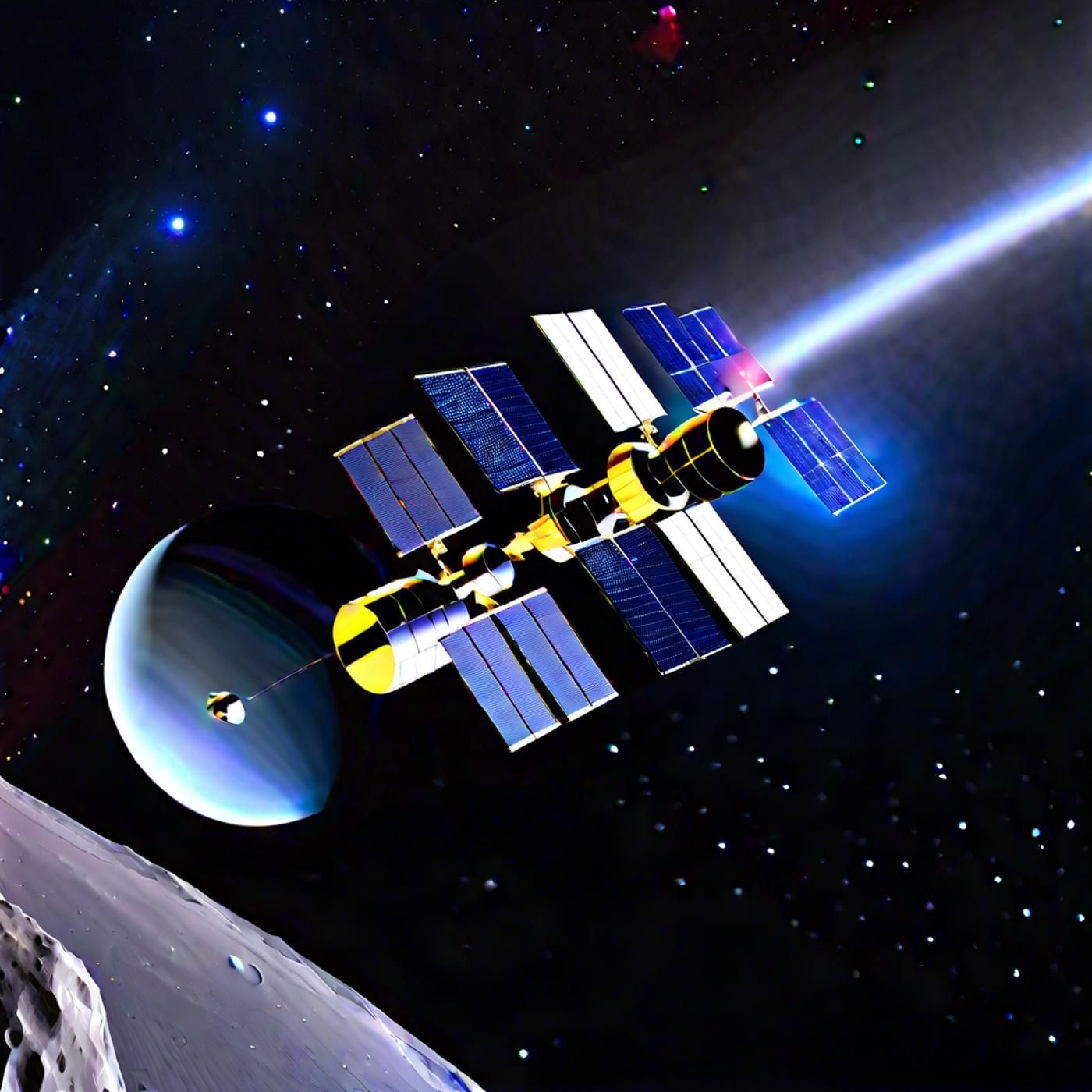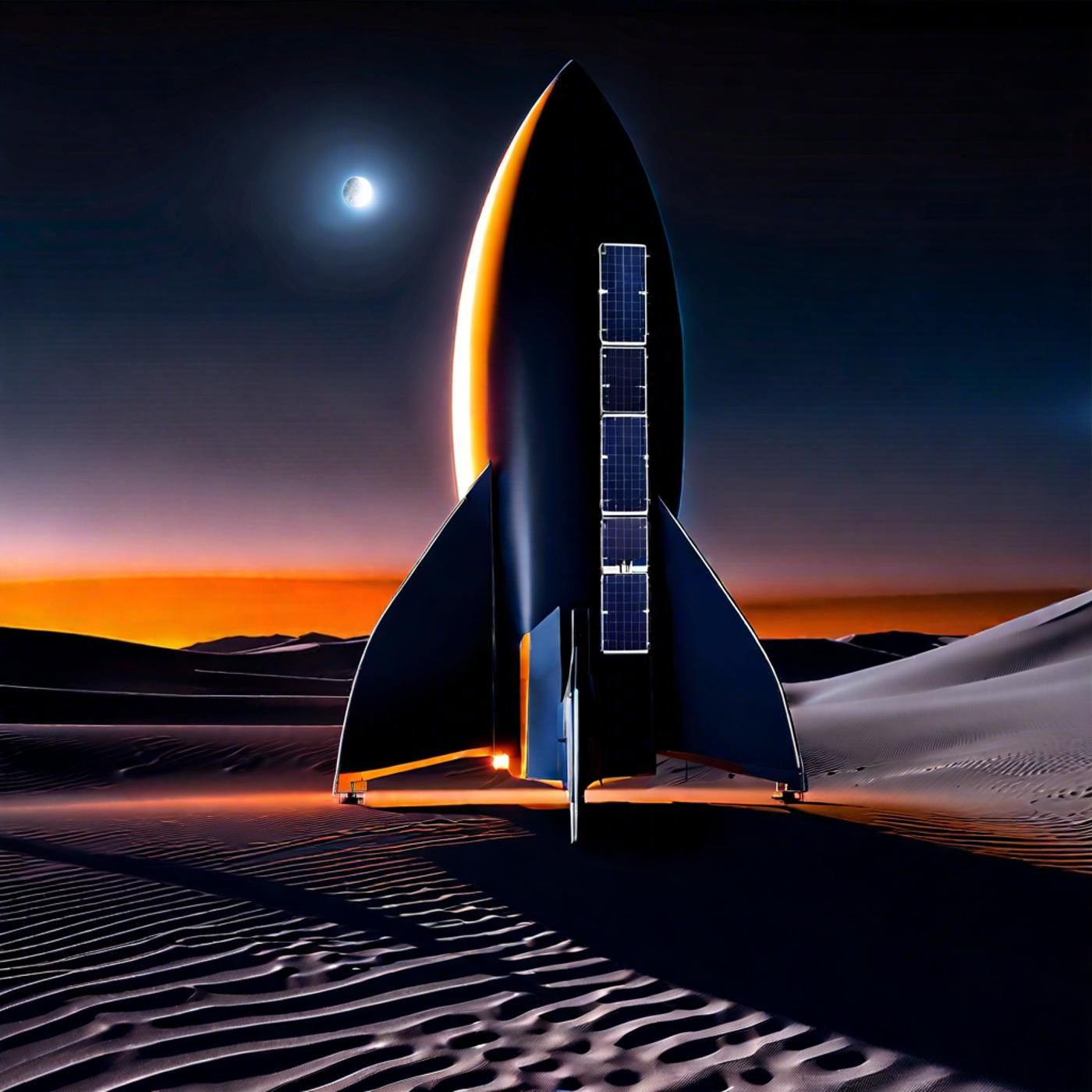S03E51: SpaceX's Milestones & Webb's Revelations: The Unfolding Saga of Space Exploration

Embark on a stellar journey with 'Astronomy Daily,' where we chart the latest advancements in space exploration, from SpaceX's monumental strides toward Flight Four to the cosmic ballet of distant black holes through the lens of the James Webb Space...
Embark on a stellar journey with 'Astronomy Daily,' where we chart the latest advancements in space exploration, from SpaceX's monumental strides toward Flight Four to the cosmic ballet of distant black holes through the lens of the James Webb Space Telescope. Discover how NASA shields our technology from solar storms, celebrate India's 3D-printed rocket engine success, and anticipate the groundbreaking Mars mission of the ExoMars Rosalind Franklin rover. Join Anna, your celestial guide, for an episode filled with human ingenuity, cosmic curiosities, and the untold tales of our universe.
Chapters:
(00:00) Welcome to another episode of Astronomy Daily podcast
(01:28) SpaceX is gearing up for flight four of its starship program
(03:26) NASA uses its James Webb Space Telescope to monitor solar storms on Earth
(07:50) NASA and European Space Agency collaborate on Mars rover mission set for 2028
(09:42) Today on Astronomy daily we've covered some incredible stories from SpaceX
Sponsors:
New: Membership option: https://astronomydaily.io/membership
NordPass: https://www.bitesz.com/nordpass
Welcome to another episode of Astronomy Daily podcast
Anna: Welcome to another enlightening episode of Astronomy Daily, the podcast where the cosmos is not a final frontier, but a constantly unfolding story. And I'm your guide, Anna, here to navigate through the latest chapters of space exploration with you today, we'll traverse from the industrious grounds of SpaceX's starbase to the ethereal realms of the early universe as seen by the eyes of the James Webb Space Telescope. With engines primed for ignition, we'll delve into SpaceX's meticulous strides towards the eminent flight four, highlighting their latest propellant loading test and the swiftly approaching wet dress rehearsal, an exercise in precision that edges us closer to the next great launch. The whispers from the cosmos have never been clearer, as the James Webb Space telescope unveils the astonishing tale of two distant black holes caught in a cosmic dance, paving the way for an expansive understanding of galactic history. In today's episode, we orbit the frontiers of human ingenuity and cosmic discovery while grounding our journey with the tangible advancements fortifying our reach into the stars. Prepare for a deep dive into the exciting innovations that promise a richer comprehension of the universe, and a peek into the profound mysteries that beckon us from light years away. Strap in. The countdown begins now. Execute your experiment.
SpaceX is gearing up for flight four of its starship program
The astronomy daily podcast SpaceX is poised on the cusp of its latest venture, flight four, with the starship program demonstrating resilience and ambition. Just this past Thursday, SpaceX initiated full stack testing, a precursor to the highly anticipated full wet dress rehearsal slated to occur in the next few days. This intricate procedure is conducted as if it were an actual launch, meticulously filling the rocket with liquid methane and liquid oxygen to simulate countdown conditions. Known for its rigorous testing methods, SpaceX has completed a partial propellant load, which has proven to be successful, pointing towards promising outcomes for the upcoming stages of the flight preparation. The magnitude of SpaceX's vision for the future is underscored by the ongoing construction of a second tower at Starbase and the advancing developments at the 39, a starship pad in Florida. This facility is poised to become a bedrock for the starship's Floridian launches. Concurrently, the diligent teams are tweaking the orbital launchpad, refining operations between flights, and transforming procedures to enhance efficiency and safety. As we look closer at the flight four stack, composed of booster eleven and ship 29, we see two giants ready to defy gravity. They've endured rigorously individual test campaigns and now stand united on the launch platform, awaiting the green light for their combined might to be unleashed. Once the wet dress rehearsal concludes, focus will shift to perfecting ship 20 nine's heat shield, a critical component for reentry, endurance, and the manifestation of SpaceX's meticulous attention to detail. This progression towards flight four is a testament to SpaceX's relentless pursuit of space exploration. Each milestone, each advance, details a narrative of progress, vision, and unwavering commitment to the ultimate goal the expansion of humanity's reach to the stars.
NASA uses its James Webb Space Telescope to monitor solar storms on Earth
With this in mind, we watch as SpaceX ascends beyond the bounds of Earth, pioneering paths as yet untraveled, underscoring the allure and the promise of the cosmos. Our technological world is vulnerable to the whims of the sun, which can unleash solar storms with the potential to disrupt communications, navigation systems, and even power grids. Here on Earth, however, fear not, because NASA's cutting edge technology stands vigilant. Equipped with sophisticated monitoring tools, NASA diligently observes the sun's surface and heliosphere, providing critical data and forecasts. With such capabilities, we're not only forewarned about intense bursts of solar radiation, but are also taking proactive steps to mitigate the risks these storms pose to our interconnected society. It's remarkable to learn that our safeguard against these cosmic tempests isn't merely chance, but the result of rigorously tracking celestial dynamics and ensuring that our space weather reports are as routine as checking for chances of rain. In an unprecedented breakthrough, astronomers have leveraged the formidable capabilities of the James Webb Space Telescope to witness a colossal and historic event, the merger of two massive black holes in a galaxy dating back to when the universe was merely 740 million years old. This extraordinary observation has set a new record for the most distant detection of a black hole merger and marks the first occurrence of such an event being identified at such an early stage in the cosmic timeline. These gargantuan black holes, each millions to billions of times the mass of our own sun, sit at the center of most massive galaxies, their formation and rapid growth still shrouded in mystery. Their presence in the ancient universe implies an unexpectedly swift and early accumulation of mass. Now, with Webb's revealing insights, the enigma surrounding the early growth of black holes has become a little less dense. Webbs observations displayed clear signatures of dense, swiftly moving gas near one black hole and hot, highly ionized gas, the type typically illuminated by black holes during their most active phases. What's more, Webb's unmatched imaging prowess allowed the clear spatial separation of the two behemoths, one harboring a mass standing at 50 million solar masses, with the other likely comparable, albeit shrouded in dense gas. This discovery not only suggests that galaxy mergers could be a crucial pathway for black hole's rapid early growth, but also that these Titanic objects have been influencing the evolution of galaxies right from the dawn of time. As we peer into the depths of space, sightings like this become milestones, shedding light on the formative epics of our universe and the mysterious dark titans lurking within it. This is a testament to the capability of human innovation and our endless quest to unravel the cosmic tapestry that is our universe. India has made a remarkable stride in the field of space technology, marking a new era for its cosmic ambition. On May 9, the Indian Space Research Organization, or ISRO, successfully completed a hot fire test of a rocket engine with a crucial difference. It was built using additive manufacturing, commonly known as 3d printing. The engine, designed to burn a hypergolic mix of propellants, functioned flawlessly for 665 seconds. This triumph is a linchpin for the upper stage of India's polar satellite launch vehicle, which plays a vital role in boosting satellites to polar orbits. The accomplishment cannot be overstated. Leveraging the laser powder bed fusion technique, ISRO has revolutionized the construction process of the engine, condensing what was once made from 14 individual parts into a single unit. This stride not only eliminated 19 weld joints, but also significantly reduced the material required, slashing, the production time by an impressive 60%. Such innovation is critical as India sets its sights on accelerating its launch frequency and fortifying its presence in the global space economy. With plans that reach as far as placing an astronaut on the moon by 2047 and ambitions of establishing a lunar base, India's advancements in 3d printing technology promise to be a cornerstone in shaping its spacefaring future.
NASA and European Space Agency collaborate on Mars rover mission set for 2028
The astronomy Daily podcast the possibility of life on the red planet has long captivated our collective imagination, and a new chapter in this astronomical saga is about to unfold. Thanks to the collaborative effort between NASA and the European Space Agency, we are on the cusp of witnessing the launch of the exomars Rosalind Franklin rover, an endeavor set to lift off in 2028 with a mission as profound as its namesake's contribution to science. This rover is designed to do what no mission has done before, drill up to 6.5ft deep below the martian surface, retrieving samples unscathed by the harsh radiation or extreme temperatures that characterize Mars's surface. By exploring these subsurface layers, the mission seeks signs of ancient life, offering insights into the planet's history and the longstanding question of its habitability. Outfitted with cutting edge instruments, including heaters and elements of the propulsion system provided by NASA. Along with their collaborative input on the Mars organic molecule analyzer, the Rosalind Franklin rover represents an international synergy of expertise and passion for space exploration. This partnership is a testament to a shared vision of pushing the boundaries of our knowledge and underscores both agencies commitment to the Mars sample return campaign, an ambitious aim to not only explore, but also to retrieve and analyze pieces of another world. As the quest to unlock the mysteries of the red planet continues, this combined effort between NASA and ESA marks a significant leap forward in the search for extraterrestrial life. Bringing together the ingenuity of scientists and engineers across continents, we are moving closer to discerning Mars ancient secrets, ones that may reshape our understanding of life in the cosmos.
Today on Astronomy daily we've covered some incredible stories from SpaceX
As we reach the end of today's journey across the cosmos, I want to thank you for joining me here on Astronomy daily, the podcast we've covered some incredible stories from SpaceX's forward march to India's technological leap with their 3d printed rocket engine and peeked into the ancient universe with the James Webb Space Telescope, revealing a black hole merger. The universe never ceases to amaze with its endless mysteries and wonders, and every day brings us new insights and discoveries that challenge our understanding and fuel our curiosity. If your thirst for the stars and beyond remains unquenched, I encourage you to visit our website at astronomydaily IO. Here you will find a frequently updating newsfeed with the latest happenings in space exploration and astrophysics. And should you wish to support the show, we offer an exclusive membership that grants you access to commercial, free editions of our episodes and other special content. It's an opportunity to join a, community of like minded space enthusiasts and help us continue bringing the universe closer to you. Plus, we've made sure membership is super affordable. Remember, every bit of support enables us to enhance your experience as we share and explore the profound beauty of space together. Check it out, sign up, and become a member of our cosmic family. Until next time, this is Anna signing off from Astronomy daily. The podcast keep looking up. The sky is full of stories waiting to be discovered.
New to Astronomy Daily - The Podcast?
Here are some great episodes to start with.



















